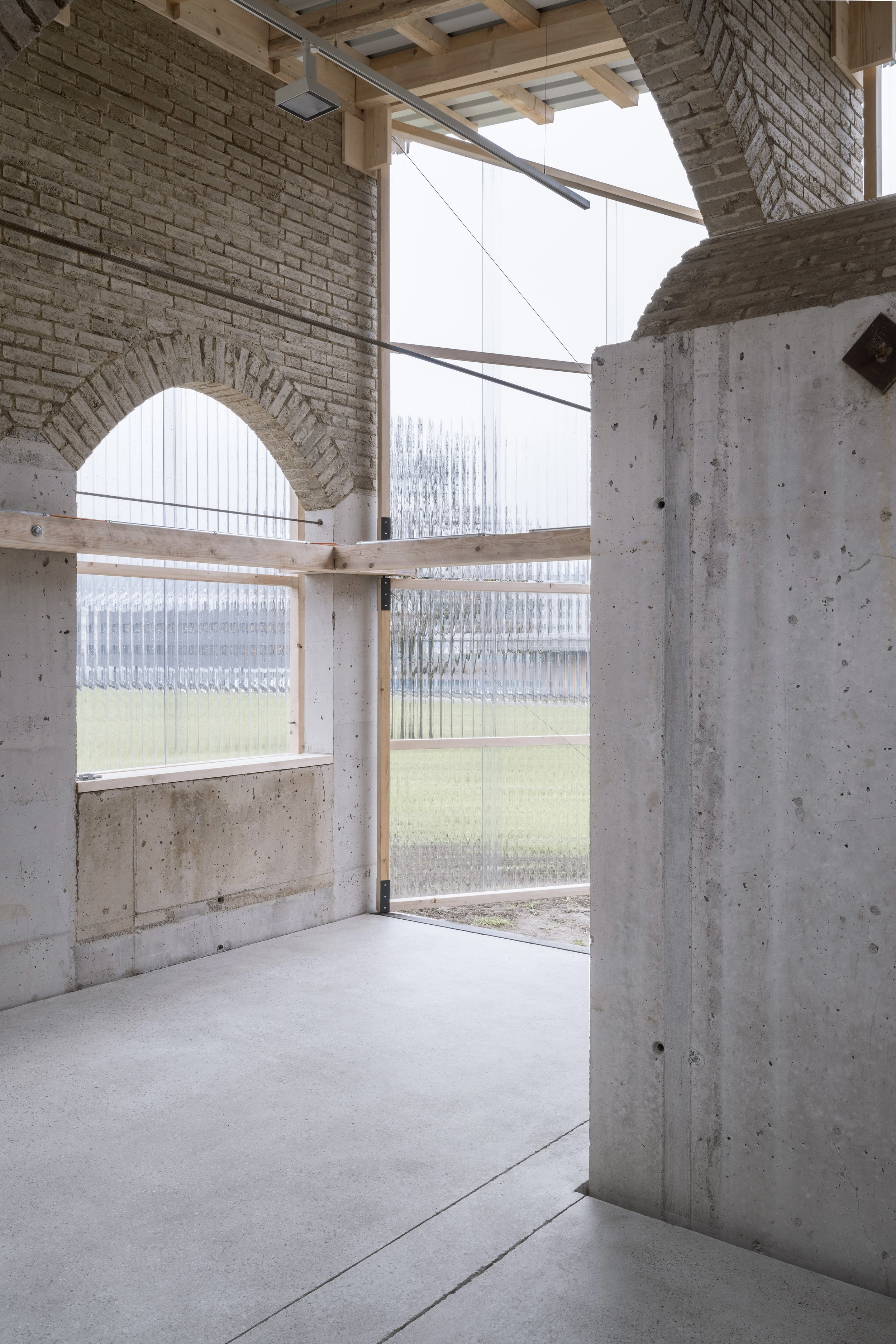"Look, this isn’t even concrete!"
"...but Oulesse® concrete," says the foreman to passersby on the MANAL construction site. Marcel Lappert, Head of Renovation at Marti AG, Bauunternehmung from Zurich and Pajtim Abazi, foreman at MANAL, share why the Marti AG team discovered joy in the small things during this innovative project and how they realised that stable, healthy building and positive environmental impact go hand in hand.
It looks like concrete, works like concrete, but it isn’t ordinary concrete. It’s Oulesse® concrete, emitting 70% less CO2 than traditional cement-based concrete. The foreman explains: "Per cubic meter of cement, the CO2 emissions are 520 kg—that’s like driving a car for 2000 km."
Time is a constant challenge on every construction site
Construction sites are under a lot of pressure to get things done quickly. Companies have deadlines. Things have to move quickly. The industry also needs to be more sustainable.
MANAL proves Marti AG’s commitment to sustainability
The MANAL project serves as a valuable proof of concept for Marti Zurich, demonstrating not only the effectiveness of alternative building materials but also the company's evolution in sustainable construction. The completed MANAL Pavilion allows future clients, architects, and investors to experience these materials firsthand. Particularly, clay as an alternative material is gaining new acceptance.
Challenges on the MANAL site
Time was a challenge, especially with the use of clay, which takes longer to dry compared to cement-based concrete. No one knew at first how much time the processes would require or how much deviation from traditional methods would be necessary. Oxara had only tested these materials in smaller projects before. How does sustainable building fit in an industry under constant time pressure?
MANAL takes sustainability to a new level
Marti AG, Bauunternehmung has long been a reliable partner of Oxara, already incorporating sustainable practices in many aspects of their construction processes. With the use of alternative materials like Oulesse® concrete and clay concrete Nossim, Marti Zurich's sustainability profile gains a new dimension. Foreman Pajtim Abazi, who had worked with Oxara products before, was excited to be part of MANAL and witness the improvements firsthand.
José Mario De Sa Pereira & Pajtim Abazi, Marti Zurich
“If you bring the right people to a project like this, they’ll be fired up—and it works! ”
At the end of the day, a project must be financially viable
For Marti AG, balancing the ecological, economic, and social aspects of sustainability is key. Sometimes, they can’t reject a project just because they wish it were more sustainable. In the end, a company must generate revenue to meet its obligations, including paying employees (social aspect of sustainability). One compromise could be more hybrid construction methods, using wood and clay. While building materials are often predetermined, Marti Zurich strives to incorporate alternative, eco-friendly materials whenever possible, as seen with Oulesse® concrete and clay concrete Nossim.
Oxara & Marti AG – Learning and benefiting from each other
Marti AG, as a major player in the Swiss construction industry, sees it as their responsibility to support startups in the industry. They were involved in MANAL even before its launch in 2022 and watched Oxara's growth closely. Marti AG`s expertise in construction and Oxara's material development knowledge complemented each other, leading to mutual learning and success on this unique project.
Oulesse® Concrete and poured earth Nossim shine on the MANAL site
Oulesse® concrete supports circularity by incorporating demolition waste into its cement-free binder.
It can be processed just like traditional concrete and dries relatively quickly.
It looks exactly like conventional concrete, as everyone involved in the pouring process confirmed.
Clay concrete Nossim offers all the advantages of clay in terms of indoor climate and aesthetics. As Pajtim Abazi puts it, "Unexpected textures and feel can emerge from this material."
The longer drying time of clay-based concrete didn’t hinder the MANAL project, nor did the lack of established standards for cement-free concrete. Using a material outside the norm still means that the construction company, the developer or the planner must take on the associated risks.
Building with clay and recycled materials will soon no longer be a niche
Marti Zurich believes there’s a potential boom in this area once the regulations are in place in Switzerland. Awareness of alternative materials is already starting in vocational schools, where apprentices are learning to work with them and understand their properties compared to conventional materials.














